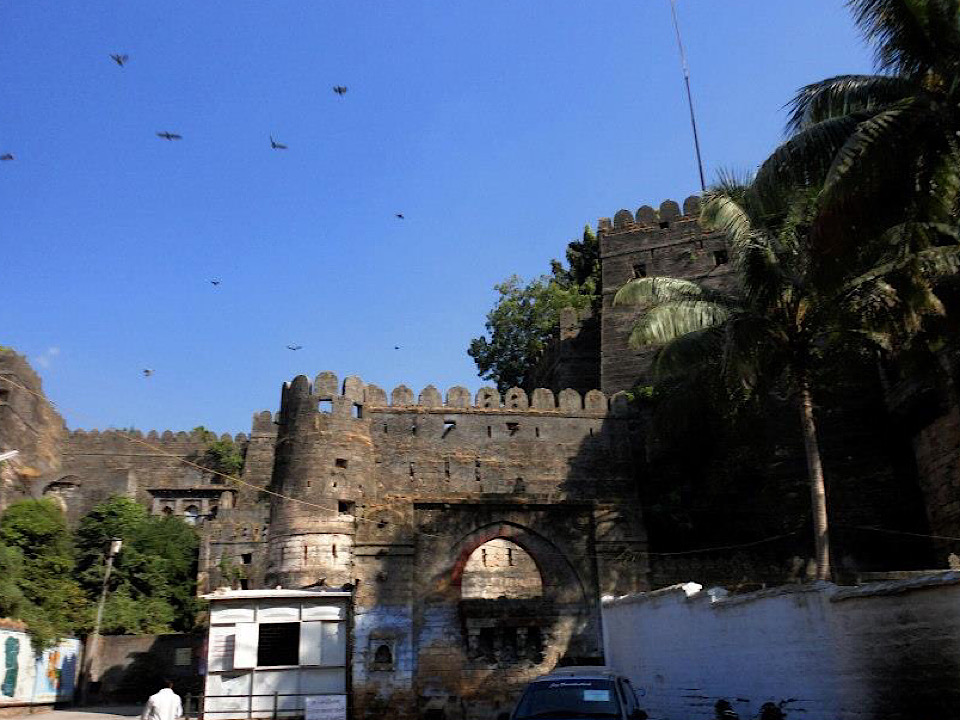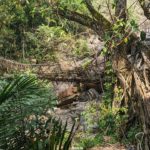
The Spooky Uparkot Fort: Junagadh, Gujarat
A place not to miss while in the ancient town of Junagadh is the historical Uparkot Fort. This imposing and massive structure is located on a plateau in the middle of the town. Uparkot Fort came into existence during the Nawabi rule of Muslim ruler Mohammad Beghda and Hindu Chudasama rulers.
There are multiple ways of getting to Uparkot fort ranging from hiring a private auto rickshaw to taking a tuk-tuk (an eight seat sharing vehicle). Walking to the fort is another good option since the fort is located at about a 15 minute walk from Kaiwa Chowk which is the main four way junction in the town.

At the entrance of Uparkot fort one will be hounded by plenty of locals who claim to be tour guides. These guides are not very useful as they lack a holistic knowledge of the fort and charge huge sums of money. Also it is advisable to beware while visiting the fort as many tour guides bully people into believing that there is an entrance fee that has to be paid in order to enter the fort. This is totally untrue and anyone can enter and visit the fort free of charge.
Uparkot Fort
On entering the fort, there is a tunnel that has a huge door that grabs the attention of the visitors. This huge door is flanked by a small Hanuman temple on the right. Just after crossing the tunnel there are steps that lead to a huge pool tank which used to supply water to people who took shelter in the fort. This tank overlooks the massive Girnar hills in the distance.

There are five major sites inside Uparkot Fort namely the Buddhist caves, Baba Pyara caves (2nd century), Adi-Kadi Vav, Navghan Kuvo and Jama Masjid.
The Buddhist caves are fine examples of rock cut architecture with ornamented pillars, carved entrances, water cisterns, chaitya hall, windows and monastic cells for meditation. It is believed that the monks fled from these caves since the monastic cells for their meditation started flooding. They then moved to carve the world famous Ajanta and Ellora Caves in Maharashtra. This is the only site in the fort that has an entry fee that needs to be paid but that is minuscule.

Adi-kadi Vav and Navghan Kuvo were built by the Chudasama Rajputs and are unique step wells. Both these step wells served as water sources during the sieges lasting for years and were essential parts that helped satisfy the basic needs of those living in the hill fort. The Adi-Kadi Vav (15th century) has a long flight of 120 steps leading to the water level in it, while the Navghan Kuvo (1260AD) is hewn from soft rock and is 52 meter deep, reached by a circular staircase winding around the shaft. The sad fact is that these two step wells have become dumping grounds today with people throwing all kinds of waste material into them.
Jama Mosque was originally a palace of Ranakdevi, and was converted into a mosque by Muhammad Begada to commemorate his victory over Junagadh in 1470 AD. Another interesting artifact from the past is the ‘Nilam’ canon, brought to Diu from Egypt to fight against the Portuguese.

Inside the mosque there is a small staircase that leads to the terrace from there one will get a splendid view of both the town of Junagadh and also the Girnar Hills in the distance. Many of the locals claim that the area around Jama Masjid is haunted after sun down, but that may just be a legend.
Uparkot Fort is so huge that it is about 2km in radius and takes approximately 3 to 4 hours to walk through the whole thing. The fort is open every day of the week from 9am to 6pm.

Uparkot Fort has plenty to offer to everyone who pays a visit to this ancient and historic monument.
For a similar experience >> Click Here











